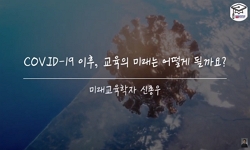코로나바이러스 감염증으로 인한 전 세계적 대유행이 생활용수 사용량에 미치는 영향을 파악하기 위해 2016~2023년 경상북도 23개 시・군의 생활용수 사용 유형을 분석하였다. 해당 기간 중 경...
http://chineseinput.net/에서 pinyin(병음)방식으로 중국어를 변환할 수 있습니다.
변환된 중국어를 복사하여 사용하시면 됩니다.
- 中文 을 입력하시려면 zhongwen을 입력하시고 space를누르시면됩니다.
- 北京 을 입력하시려면 beijing을 입력하시고 space를 누르시면 됩니다.

코로나바이러스 감염증이 경상북도 생활용수 사용량에 미친 영향 = Effect of COVID-19 on Tap Water Consumption in Gyeongsangbuk-do
한글로보기https://www.riss.kr/link?id=A109590029
- 저자
- 발행기관
- 학술지명
- 권호사항
-
발행연도
2025
-
작성언어
Korean
-
주제어
COVID-19 ; potable water ; Gyeongsangbuk-do ; LPCD ; 코로나바이러스 ; 생활용수 ; 경상북도 ; 1인 1일 물사용량
-
등재정보
KCI등재
-
자료형태
학술저널
- 발행기관 URL
-
수록면
148-155(8쪽)
- DOI식별코드
- 제공처
-
0
상세조회 -
0
다운로드
부가정보
국문 초록 (Abstract)
코로나바이러스 감염증으로 인한 전 세계적 대유행이 생활용수 사용량에 미치는 영향을 파악하기 위해 2016~2023년 경상북도 23개 시・군의 생활용수 사용 유형을 분석하였다. 해당 기간 중 경상북도 시・군의 가정용, 일반용, 욕탕용 생활용수 사용량을 환경부 상수도 통계를 통해 수집하고 통계청 국가통계포털에서 연도별 인구를 수집하여 활용하였다. 경상북도 시・군 대부분은 인구가 감소 추세이나, 2020년 코로나 바이러스 감염증으로 인해 인구 감소가 가속되었다. 인구 감소 및 코로나바이러스 감염증 유행과 관련 없이 2016~2023년 사이 생활용수 전체 사용량은 매년 증가하는 추세를 나타냈다. 코로나바이러스 감염증 발생 이전(2016~2019년)과 비교해 감염증 유행이 극심했던 시기(2020~2021년) 동안 가정용수 사용 비율은 전반적으로 증가하는 경향을 보였다. 반면, 일반용수(영업용수 및 기업, 가게 등의 물 이용)와 욕탕용수의 사용 비율은 감소하는 경향을 나타냈다. 2022년에서 2023년까지의 코로나바이러스 감염증 회복기 동안 가정용수, 일반용수, 욕탕용수의 사용 비율이 2019년 수준으로 회귀한 점을 고려할 때, 코로나바이러스 감염증으로 인한 위생 청결에 대한 인식 변화와 사회적 거리두기와 같은 생활양식의 변화가 일시적으로 생활용수 사용 특성에 영향을 미친 것으로 판단된다.
다국어 초록 (Multilingual Abstract)
To understand the impact of the global COVID-19 pandemic on tap water consumption, we analyzed the patterns of tap water usage in 23 cities and counties in Gyeongsangbuk-do from 2016 to 2023. During this period, data on household, general (for busines...
To understand the impact of the global COVID-19 pandemic on tap water consumption, we analyzed the patterns of tap water usage in 23 cities and counties in Gyeongsangbuk-do from 2016 to 2023. During this period, data on household, general (for businesses, enterprises, and stores), and public bathing water usage in Gyeongsangbuk-do were collected from the Ministry of Environment's statistics. Additionally, annual population data were gathered from the National Statistical Portal. Most cities and counties in Gyeongsangbuk-do have been experiencing a declining population trend; however, this trend accelerated due to the COVID-19 pandemic in 2020. Despite population decline and the pandemic, overall tap water consumption showed an increasing trend each year from 2016 to 2023. Compared to the pre-COVID-19 period (2016-2019), household water usage generally increased during the height of the pandemic (2020-2021). In contrast, the usage of general water and public bathing water showed a decreasing trend. Considering that the usage proportions of household, general, and public bathing water returned to 2019 levels during the recovery period from 2022 to 2023, it is evident that the changes in lifestyle, such as heightened awareness of hygiene and cleanliness and social distancing due to the COVID-19 pandemic, temporarily impacted tap water usage patterns.
동일학술지(권/호) 다른 논문
-
양돈분뇨의 혐기성 소화시 암모니아 부하에 따른 메탄발생 지체시간 및 동역학적 인자 도출에 관한 연구
- 대한환경공학회
- 조효진
- 2025
- KCI등재
-
도시 물 순환 시스템에서 Net Zero와 RE100 달성 방안 연구
- 대한환경공학회
- 안세영
- 2025
- KCI등재
-
- 대한환경공학회
- 박상훈
- 2025
- KCI등재
-
금강수계에서 과불화화합물 중 PFOA, PFOS, PFHxS의 검출 특성에 관한 연구
- 대한환경공학회
- 민들레
- 2025
- KCI등재




 DBpia
DBpia


